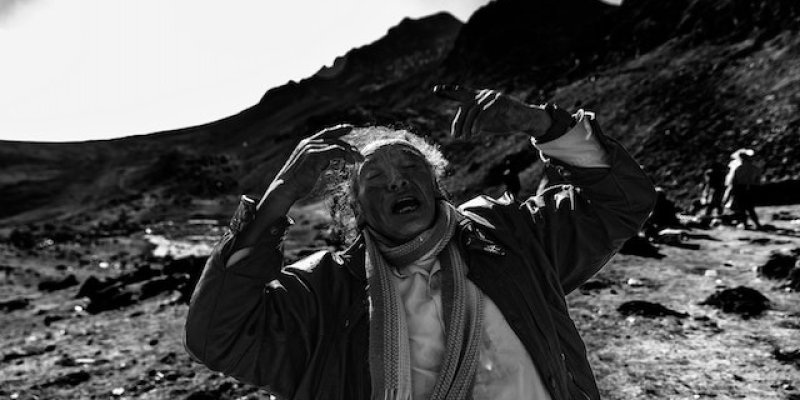
When it comes to the diverse world of musical expression, few practices are as unique and intriguing as throat singing.
Originating in various cultures around the world, throat singing is a unique vocal technique that produces multiple tones simultaneously, creating an ethereal and otherworldly sound.
While the term "throat singing" has been widely used to describe this technique, it can be misleading and even inaccurate.
Throat singing involves the manipulation of the vocal cords in your larynx, not your throat. But the term feels right to a lot of people because of the guttural, throaty sound it produces.
Tuvan throat singing, hailing from the grasslands of Tuva in Central Asia, is perhaps one of the most well-known forms of throat singing.
Renowned for its ability to produce a harmonic overtone while simultaneously emitting a fundamental pitch, Tuvan throat singing creates an illusion of two distinct notes.
Styles like "khoomei" and "sygyt" showcase the versatility and complexity of Tuvan vocal traditions.
Among the diverse tapestry of throat singing traditions, one unique element emerges from the spiritual realms of India: Buddhist chanting.
Rooted in ancient Buddhist practices, this form of throat singing is deeply intertwined with meditation, mindfulness, and the quest for enlightenment.
Unlike some of the more overtly harmonic styles, Indian Buddhist chanting focuses on the resonance of the voice to create a contemplative atmosphere that transports practitioners to a state of inner peace and spiritual connectedness.
Related Post: How To Sing Lower Without Damaging Your Voice
The Inuit people of Canada's Arctic region have their own rendition of throat singing, called "katajjaq."
Originally a form of vocal game played by Inuit women, katajjaq has evolved into an art form that emphasizes rhythmic breathing and vocal improvisation, often performed in pairs with an element of friendly competition.
In the enigmatic world of throat singing, where cultures harmonize voice and tradition, a unique form emerges from the cultural tapestry of Japan's Hokkaidō Island—the captivating practice of Rekuhkara.
The traditional Ainu method, similar to the Inuit, involves two women facing each other, with one forming a tube with her hands and chanting into the oral cavity of her partner.
This creates a resonant chamber that amplifies the vocalizations, producing a rich and layered sound that echoes the natural world.
Hailing from the island of Sardinia, Italy, "canto a tenore" showcases the rich harmonies and interplay of voices in a group setting.
Using a blend of melodic and throat singing techniques, Sardinian singers craft intricate and captivating soundscapes that reflect the region's cultural heritage.
While often used interchangeably, overtone singing and throat singing are distinct vocal techniques with subtle differences.
Overtone singing involves manipulating the resonances in the vocal tract to emphasize specific overtones, resulting in a harmonic melody over a fundamental pitch.
Related Post: Overtones Vs. Fundamentals In Music And Audio (In Simple Terms)
On the other hand, throat singing encompasses a broader range of techniques, sometimes including overtone singing, where multiple pitches are produced simultaneously using vocal harmonics.
For example, Tuvan khoomei involves producing an overtone above a fundamental pitch, creating a dual-voice effect from one singer.
Inuit katajjaq, on the other hand, focuses on rhythmic breathing and vocal improvisation between two singers in a competitive yet harmonious exchange.
Learning throat singing requires patience, dedication, and a willingness to explore new vocal territories. Here are some valuable tips to kickstart your journey:
Find a Skilled Mentor: Learning from an experienced throat singer can provide invaluable insights and personalized guidance. They can also help with techniques that require two people.
Master Breathing Techniques: Proper breath control is essential for sustaining throat singing tones. Practice diaphragmatic breathing to enhance your vocal control.
Experiment with Different Styles: Explore various throat singing styles to find the one that resonates with you the most. Each style has its own unique challenges and rewards.
Focus on Resonance: Experiment with different resonant spaces in your vocal tract to create distinct sounds and harmonics.
Practice Regularly: Like any skill, consistent practice is key to improving your throat singing abilities. Start with simple techniques and gradually build complexity.
Record Yourself: Recording your practice sessions allows you to analyze your progress and make necessary adjustments.
Related Post: 10 Singing Styles To Consider As A Vocalist

As a session singer, writer, and producer that has worked with over 300 clients to provide high-quality jingles, singles, and features, Yona spends her time creating and marketing new music and helpful resources for creators. Check out Yona’s latest releases on her Spotify, her Youtube and share if you like it!
If you are in need of singer, songwriter or song producer services, see what Yona Marie can offer you on her services page.